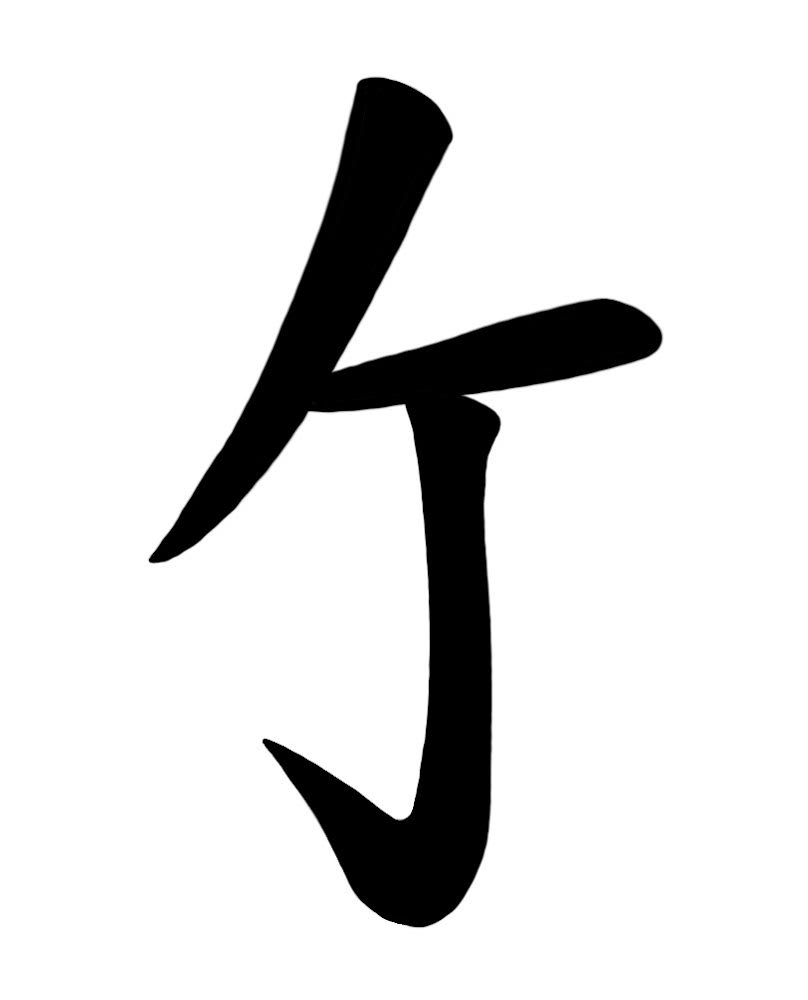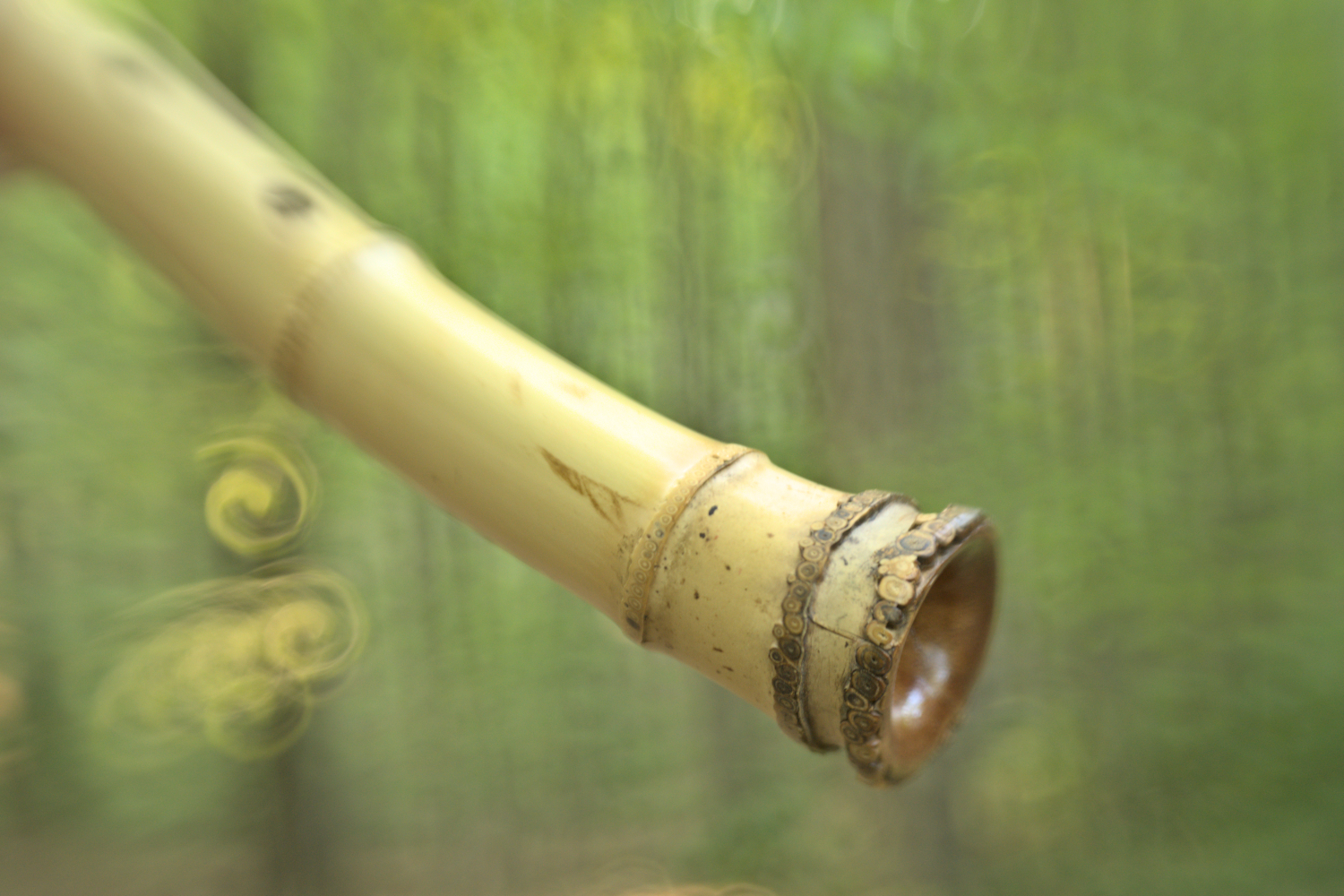Allow me to share with you what truly makes shakuhachi unique. Certainly, shakuhachi practice is often more than a musical endeavor; it’s a path of profound discovery. Among all melodic instruments of Japan, the shakuhachi holds a unique connection to spiritual practices and meditation. Its legacy was largely gifted to us by the Samurai-turned-Komuso monks of Japan’s Edo period (1603-1867 AD). Yet, the history of these remarkable shakuhachi flutes stretches back to the ancestral Chinese Xiao flutes.
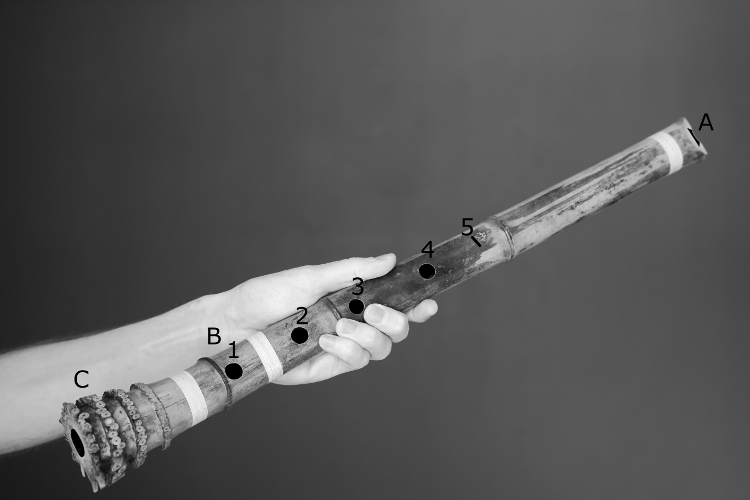
As an instrument, shakuhachi are oblique, vertical flutes, traditionally with five finger-holes. These holes are tuned to the minor pentatonic scale, the most widely recognize in the world. To craft them, craftspeople like me almost exclusively use bamboo, a material that breathes life into the sound.
The Voice Within the Name
The very word “shakuhachi” whispers its identity. A shaku (尺) is an ancient Japanese measure of length (about 30.3 cm or 11.9 inches), and hachi (八) means eight. The name is a poetic abbreviation for ichi-shaku hachi-sun, or “one foot and eight tenths,” describing the standard length of approximately 54.5 cm. This classic 1.8 shakuhachi is so fundamental that its name has become the umbrella term for all sizes of this incredible flute.
As for pitch, the length of a shakuhachi instrument dictates its fundamental voice. A longer flute, such as a 2.4, sings with a deeper, more resonant pitch than a shorter 1.8. The five finger-holes are meticulously tuned to harmonize with Ro, the foundational note.
An Elegant Design, An Infinite Sound
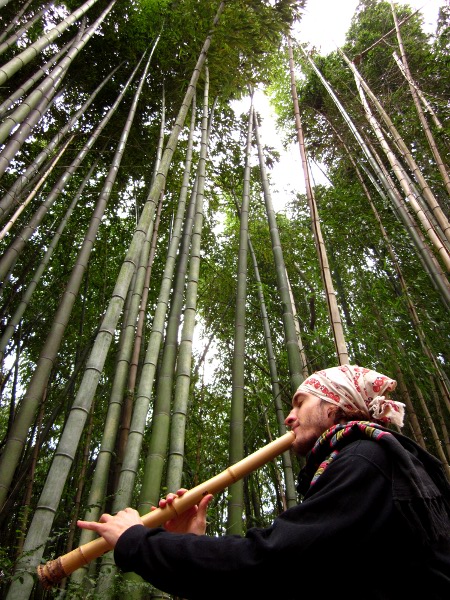
In the hands of a skilled player, the shakuhachi flute reveals its astonishing sonic flexibility. It’s a masterpiece of minimalist design, yet it’s far from simplistic. Unlike modern silver flutes, the shakuhachi has no complex system of keys. Instead, its five large, open finger-holes invite a deep, tactile connection. They allow for subtle microtonality, chromatic expressions, and dynamic embellishments that define its sound.
There’s no fixed mouthpiece to guide the breath. Instead, only the utaguchi, a deceptively simple angled cut at the top which forms the sharp blowing edge. While this design demands greater skill to play, it offers boundless freedom to explore the sound. Through the subtle shaping of our embouchure, and the careful modulation of our breath, we sculpt of each note a landscape. By altering the distance between our lips and the utaguchi, we can bend and shade the pitch. In so doing, we can summon an entire universe of sound from its minimalist form.
An Odyssey Through Time
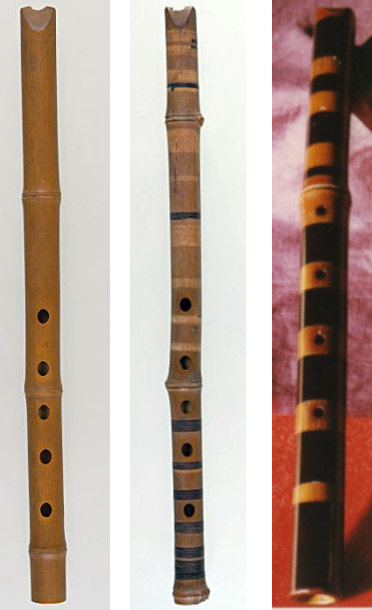
The shakuhachi flute first journeyed from China to Japan during the Nara period (710-794 AD). There, it became part of the imperial court music ensemble, Gagaku (雅楽). However, these early flutes were often shorter at 1.08 shaku. Additionally, they were crafted not from the root end of the bamboo, but from its upper stalk.
Apparently, it wasn’t until the 17th century that artisans in Japan had begun to utilize the root end. Quite possibly, they were inspired by the root end Nan Xiao flutes of Southern China. In any event, this pivotal evolution gave the shakuhachi the depth, power, and organic beauty we cherish today.
Madaké Bamboo: The Body of the Shakuhachi Sound
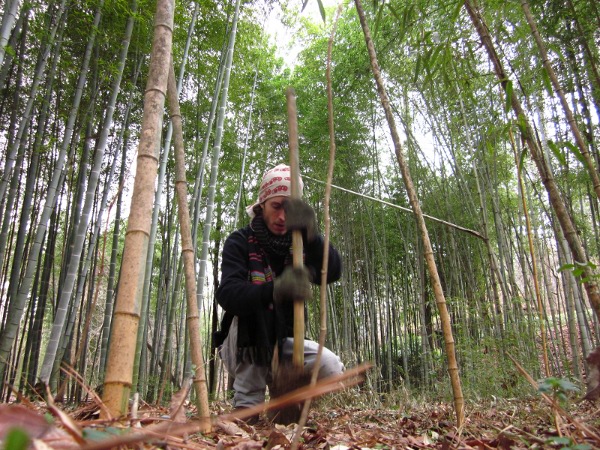
Like the instrument itself, Madaké (真竹) bamboo is a gift from China, first imported to Japan over a millennium ago. For centuries, artisans have chosen this specific bamboo to craft shakuhachi musical instruments. We value it for its strength, straightness, and ideal node spacing for finger-holes.
Most importantly, the first meter of the stalk possesses a natural inner taper. This taper is a crucial element for achieving the shakuhachi sound and feeling. In my experience, the greatest gift of Madaké is its infinite variety — the myriad voices of nature it holds within. These voices are expressed in Jinashi and Jimori style shakuhachi musical instruments. This is why I craft them, to honor and preserve the natural bore of the bamboo.
The Komuso: Monks of the Empty No-thingness
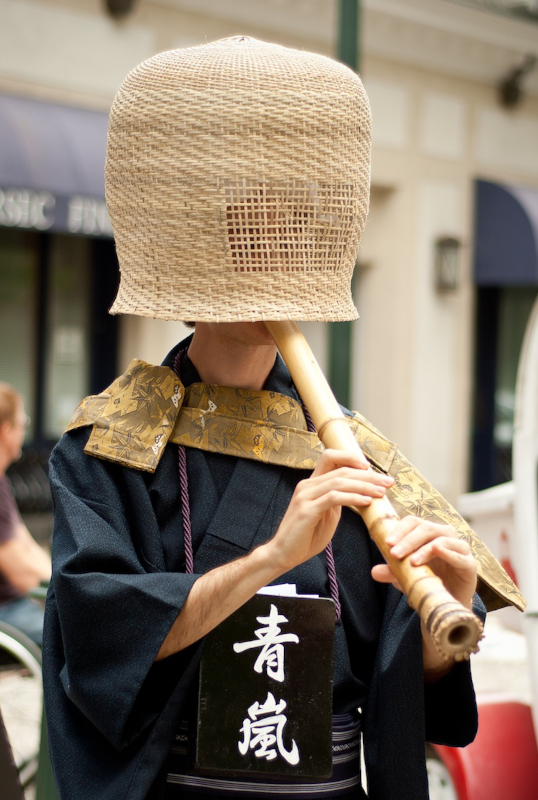
During the Edo period, a unique society of shakuhachi players known as the Komuso (虚無僧) emerged. These were former Samurai, many of them masterless Ronin, some of whom seeking a path of spiritual mendicancy. It was these Komuso who profoundly shaped the destiny of the shakuhachi. Within Japan, they popularized the now-iconic root end design. Most importantly, they composed the largest body of solo flute music in the world: the Honkyoku (本曲). These compositions aren’t merely music, they can be sonic meditations, pathways to enlightenment as much as any others. Across Japan, distinct regional Honkyoku styles developed, each a different dialect of the spirit.
The Shakuhachi in Our Time
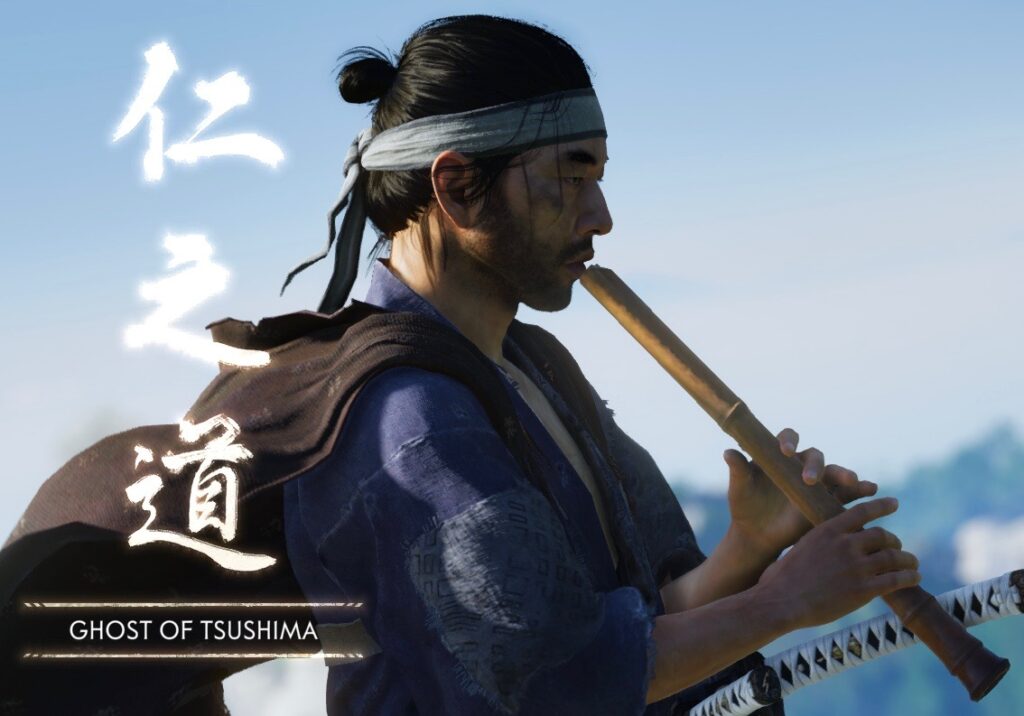
Today, the voice of the shakuhachi musical instrument is finding its way into the hearts of people the world over. This global awareness is thanks to dedicated teachers and practitioners, but also to its growing presence in popular culture. From manga and anime to the immersive world of video games. Perhaps none are so famous as Ghost of Tsushima which beautifully integrated the shakuhachi into its gameplay and soundtrack.
In the end, the history of the shakuhachi is a testament to the enduring human spirit. Despite numerous hardships, many shakuhachi players remained committed to their practice. In so doing, they inspired generations. Indeed, we each keep the flame alive every time we pick up our shakuhachi. Even if we don’t get a sound…
